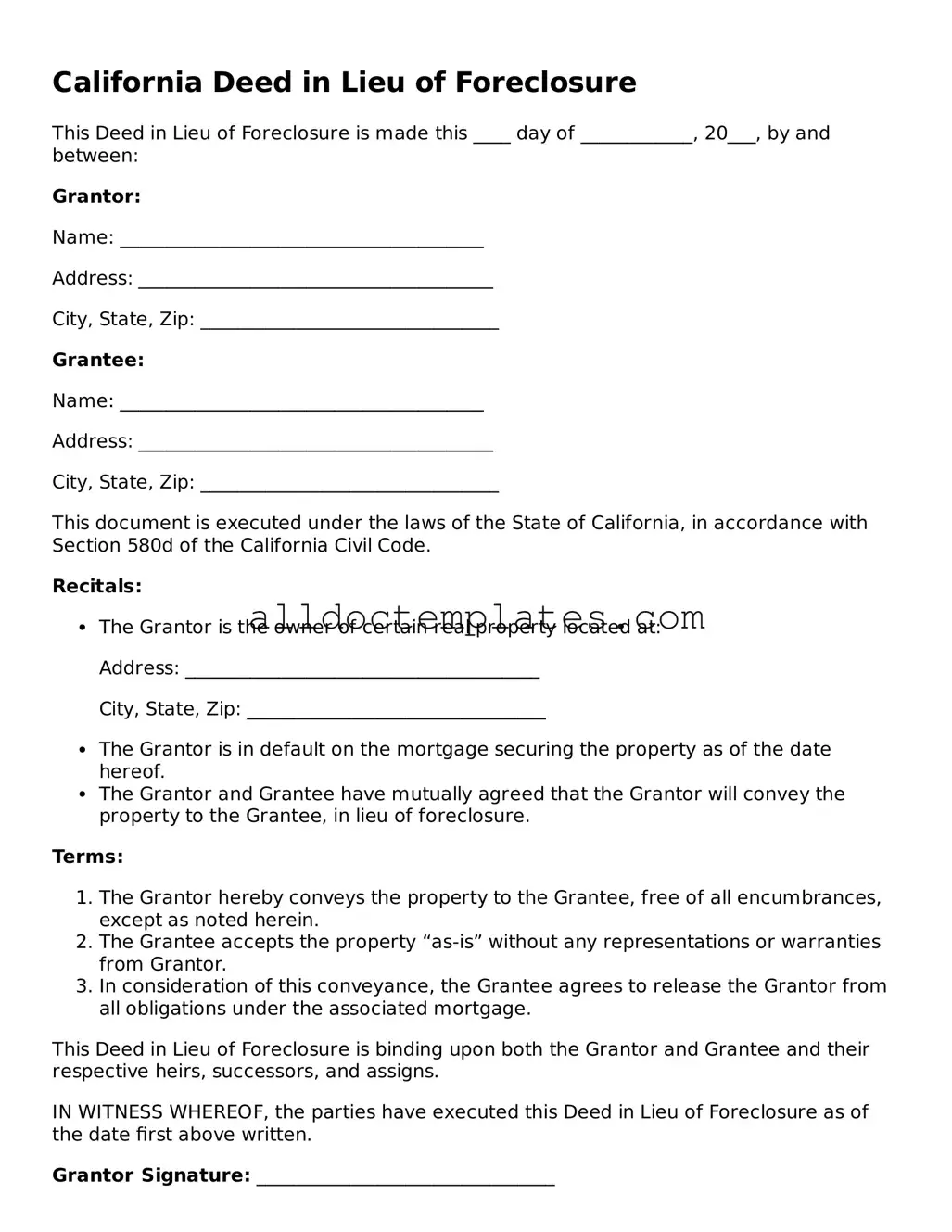California Deed in Lieu of Foreclosure
This Deed in Lieu of Foreclosure is made this ____ day of ____________, 20___, by and between:
Grantor:
Name: _______________________________________
Address: ______________________________________
City, State, Zip: ________________________________
Grantee:
Name: _______________________________________
Address: ______________________________________
City, State, Zip: ________________________________
This document is executed under the laws of the State of California, in accordance with Section 580d of the California Civil Code.
Recitals:
- The Grantor is the owner of certain real property located at:
Address: ______________________________________
City, State, Zip: ________________________________
- The Grantor is in default on the mortgage securing the property as of the date hereof.
- The Grantor and Grantee have mutually agreed that the Grantor will convey the property to the Grantee, in lieu of foreclosure.
Terms:
- The Grantor hereby conveys the property to the Grantee, free of all encumbrances, except as noted herein.
- The Grantee accepts the property “as-is” without any representations or warranties from Grantor.
- In consideration of this conveyance, the Grantee agrees to release the Grantor from all obligations under the associated mortgage.
This Deed in Lieu of Foreclosure is binding upon both the Grantor and Grantee and their respective heirs, successors, and assigns.
IN WITNESS WHEREOF, the parties have executed this Deed in Lieu of Foreclosure as of the date first above written.
Grantor Signature: ________________________________
Date: ______________________________________
Grantee Signature: ________________________________
Date: ______________________________________
This document is executed as a deed and will be filed in the county where the property is located.
